Luxmy Ragunathan
Advisor: Carlos Rueda
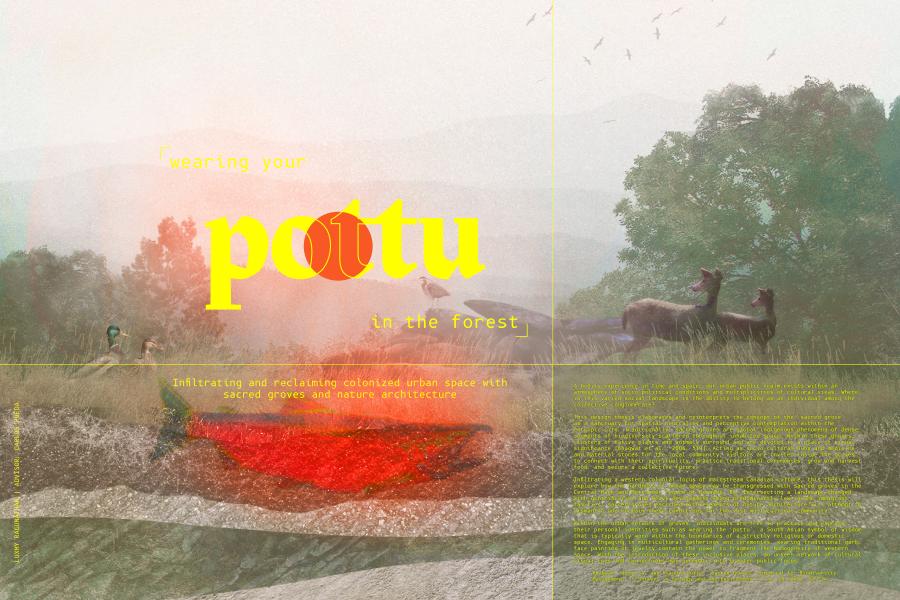

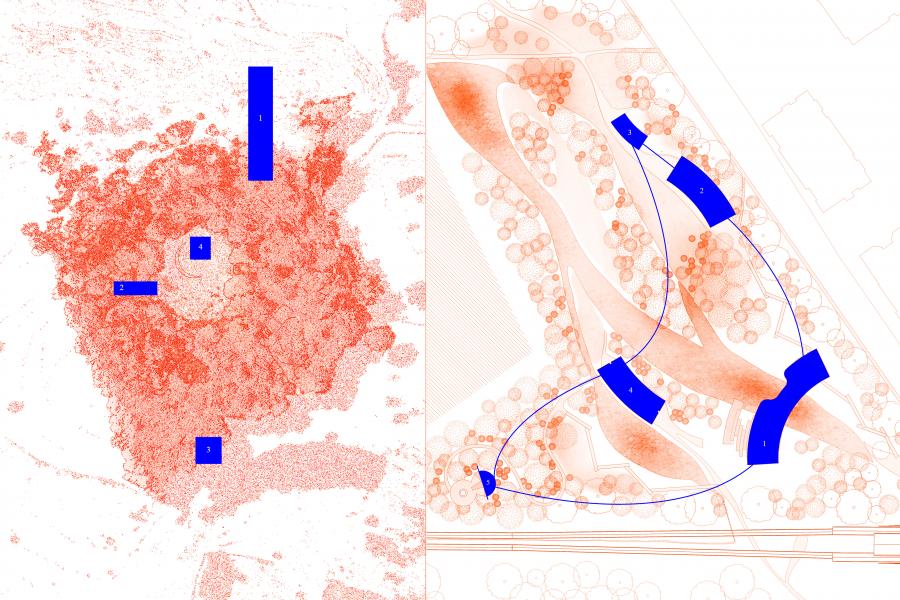
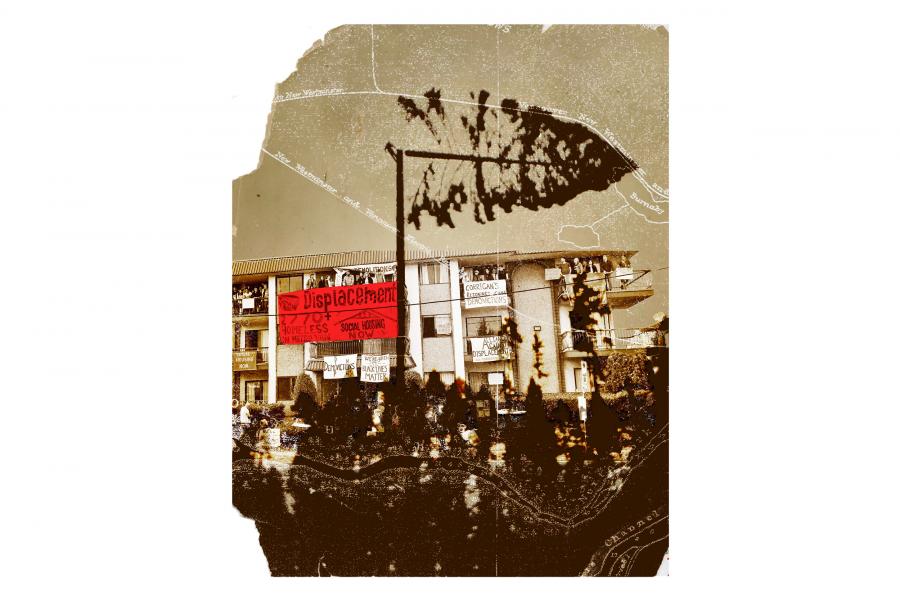
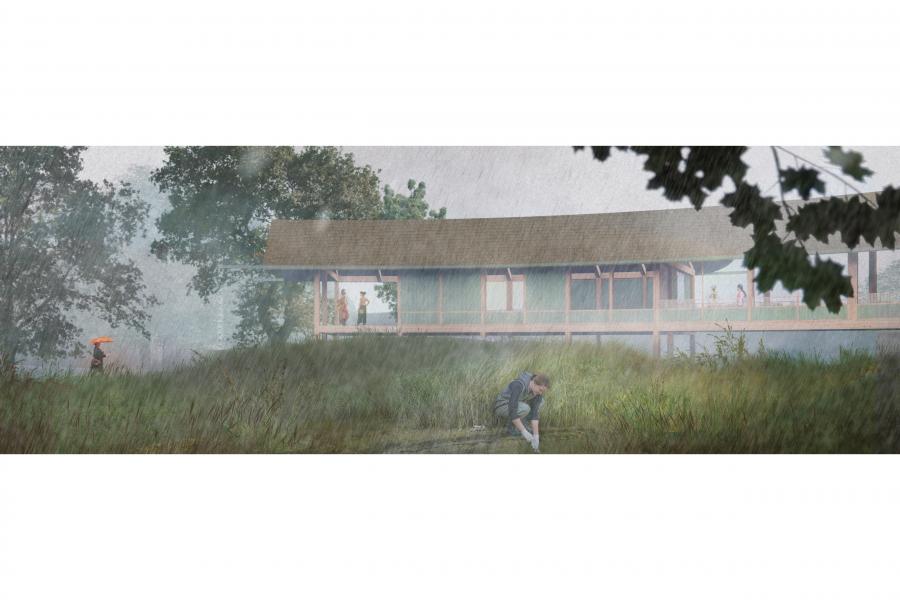
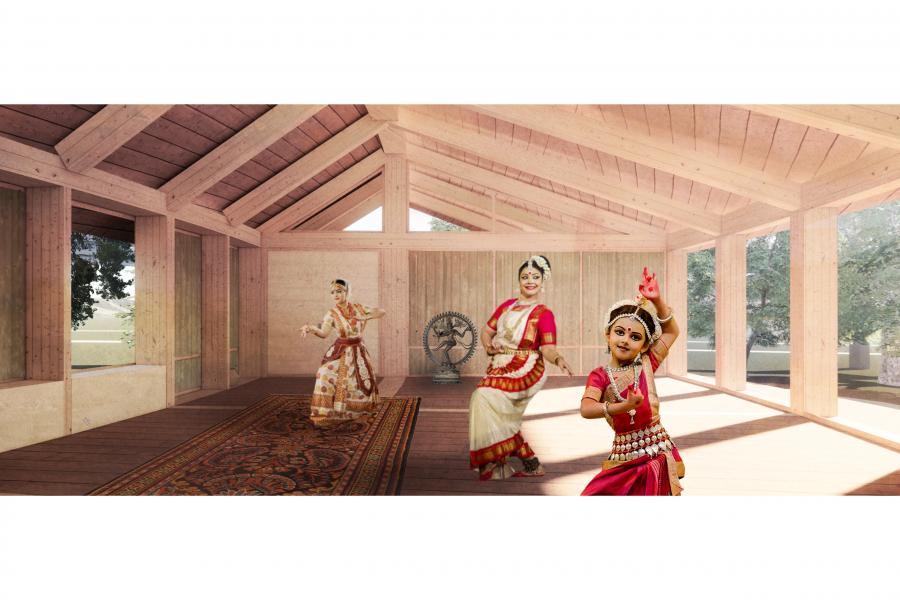
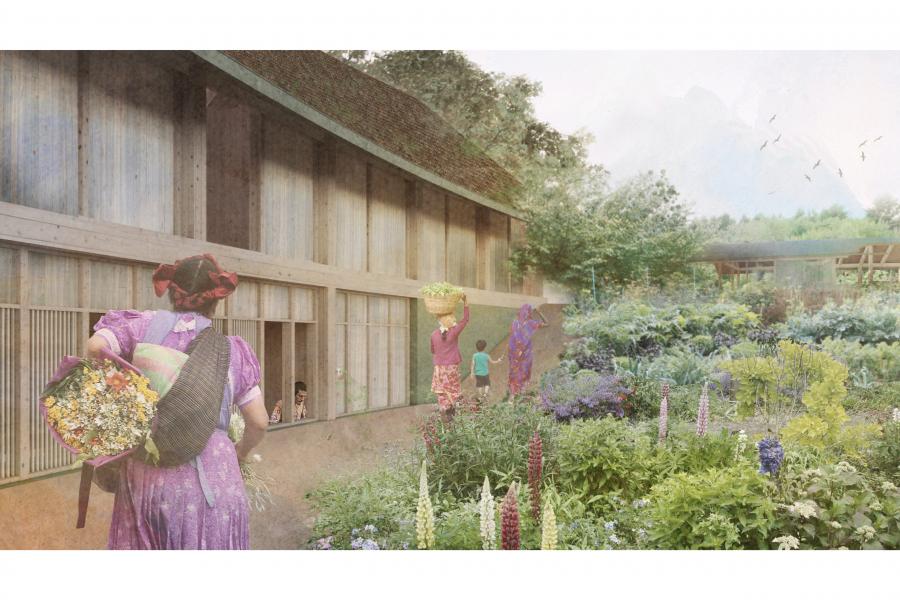

Wearing your pottu in the forest: Infiltrating and reclaiming colonized urban space with sacred groves and nature architecture
Unearthing and disseminating my presence as a first-generation Tamil-Canadian within Canada’s cultural and biological landscape has led me to explore processes of displacement and settlement, modes of perception, and otherness. Current patterns of settlement in Canada do nothing to foster a connection to the place or cultural identity, resulting in disconnection towards our communities, our environment and ultimately the global climate crisis. As is evident with indigenous cultures around the world, it is the culturally imbued awareness of local ecosystems that fosters a sense of caring and reciprocity with the natural world. This mode of thinking and experience is absent from the typical settlement process. This thesis suggests that a contemporary settlement process facilitated by land-based placemaking strategies may bridge this cultural and environmental divide.
Placemaking strategies are envisioned through an understanding that future sustainable design of our urban cities is achieved by practices that facilitate the intersection of biodiversity and cultural diversity (Pretty et al., 2009). This perspective questions the notion of sustainability as a quantitative standard based on ‘green’ high-tech innovations. The global Shadow Conservation Network1 composed of sacred groves2 is a community-based natural conservation model that fits this holistic view of sustainability. Inspired by this model, this thesis reinterprets the concept of the interconnective sacred grove network within the urban Canadian city. Scales of this intervention are explored through urban planning, landscape, and architectural design. Utilising local vernacular design and emphasizing Lo-TEK3 practices, the site of study called the Forest Gardens, located in Central Park, Burnaby, BC is reclaimed for the multicultural community in a way that regenerates rituals and practices that foster human-nature reciprocity.
Bhagwat, Shonil A, and Claudia Rutte. “Sacred Groves: Potential for Biodiversity Management. ”Frontiers in Ecology and the Environment 4, no. 10 (0AD): 519–24.
Pretty, J., Adams, B., Berkes, F., de, S. F., Dudley, N., Hunn, E., Pilgrim, S. (2009). The Intersections of Biological Diversity and Cultural Diversity: Towards Integration.
Watson, J. (2019). A Mythology of Technology. In Lo-TEK: design by radical indigenism (pp. 16–23)., Taschen.
1 Shadow Conservation Network: A connected global system of informally protected sacred lands (Watson, 2019).
2Sacred Groves: Global natural sacred sites dedicated to ancestral spirits or deities, maintained through traditional methods of community-based conservation (Bhagwat, 2006).
3Lo-TEK: Indigenous infrastructures utilising local, inexpensive, handmade, and easily constructed soft systems, embedded with traditional ecological knowledge, practices and beliefs (Watson, 2019).
